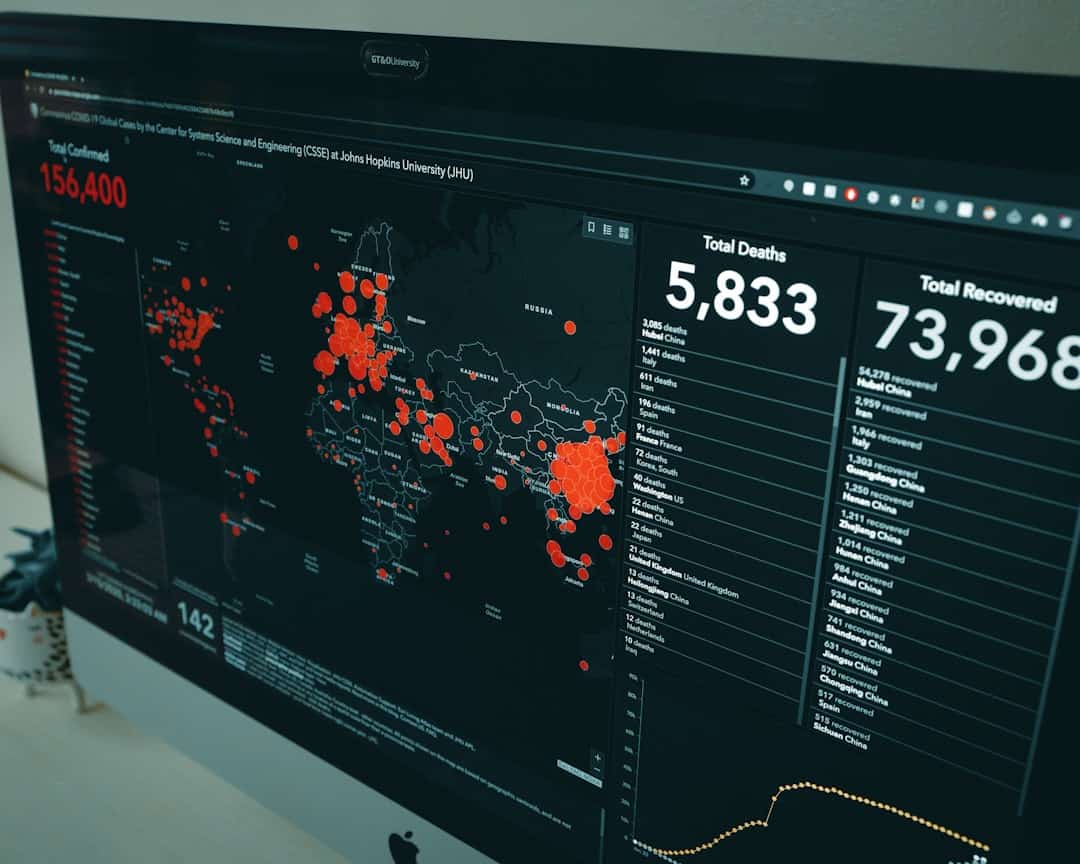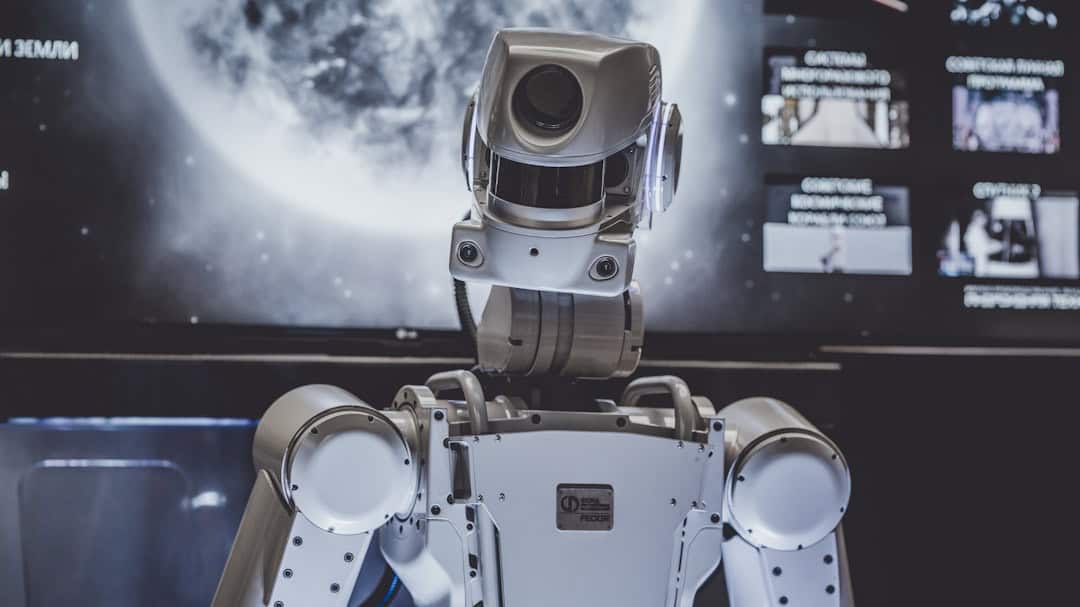The creation of computer systems that are able to carry out tasks that normally require human intelligence is known as artificial intelligence (AI), a rapidly developing field. Learning, thinking, solving problems, perceiving, and language comprehension are among these tasks. Though it has already made great strides in manufacturing, healthcare, finance, retail, transportation, and logistics, artificial intelligence (AI) has the potential to transform many other industries. AI is developing as a result of the growing availability of big data, improvements in processing power, and the creation of complex algorithms. Artificial intelligence (AI) is divided into two categories: narrow AI and general AI.
Key Takeaways
- Artificial Intelligence (AI) is the simulation of human intelligence processes by machines, including learning, reasoning, and self-correction.
- In healthcare, AI is being used for medical imaging analysis, drug discovery, and personalized treatment plans, leading to improved patient outcomes and cost savings.
- AI is revolutionizing finance and banking by automating processes, detecting fraud, and providing personalized financial advice to customers.
- The impact of AI on manufacturing and automation includes increased efficiency, predictive maintenance, and improved safety for workers.
- In customer service and retail, AI is being used for chatbots, personalized recommendations, and inventory management, enhancing the customer experience and streamlining operations.
- The future of AI in transportation and logistics includes autonomous vehicles, route optimization, and predictive maintenance, leading to safer and more efficient transportation systems.
- Ethical considerations and challenges of AI include bias in algorithms, job displacement, and privacy concerns, requiring careful regulation and oversight.
Weak AI, sometimes referred to as narrow AI, is made to do a single job, like translating languages or recognizing speech. Conversely, general artificial intelligence (AI) is a higher level of AI that has the ability to comprehend, acquire, & use knowledge in a variety of fields. While narrow AI has already been incorporated into numerous systems & applications, general AI is still primarily theoretical.
The potential effects of AI on various industries, as well as the ethical issues & difficulties that surround its creation and application, must be taken into account as the technology develops. Improving The Precision of Diagnoses. With the use of AI, medical professionals can create more precise diagnoses and individualized treatment plans by analyzing complex data to find patterns and insights. AI-powered diagnostic tools, for instance, can examine MRI & X-ray images to find anomalies and help radiologists diagnose patients more precisely. Administrative Procedures Simplified.
In order to identify people who are at risk of contracting specific conditions and suggest preventive measures, AI can also analyze patient data. Also, by automating processes like billing, appointment scheduling, and medical record management, AI can improve administrative efficiency in healthcare facilities. As a result, there is a decreased chance of administrative task errors and healthcare personnel can concentrate more on patient care. Resolving Issues and Difficulties.
| Industry | Impact of AI |
|---|---|
| Healthcare | Improved diagnostics and personalized treatment |
| Finance | Automated trading and fraud detection |
| Manufacturing | Optimized production and predictive maintenance |
| Transportation | Autonomous vehicles and route optimization |
Concerns concerning data security and privacy, as well as the possibility of bias in AI algorithms, are also raised by the use of AI in healthcare. To reduce these risks, healthcare companies must put strong data protection measures in place and make sure AI systems are designed and trained on a variety of representative datasets. Artificial Intelligence is being used in the banking & finance sector to generate data-driven decisions, detect fraudulent activity, automate processes, and enhance customer service. Chatbots and virtual assistants driven by AI are being used to expedite client interactions and offer individualized customer support.
Virtual assistants can perform repetitive tasks like retrieving transaction histories and account balances, freeing up human agents to work on more intricate assignments. Large volumes of financial data are also being analyzed by AI algorithms to find patterns and trends that can guide risk management and investment choices. Artificial Intelligence is also being used to identify fraudulent activity by analyzing transaction data and finding irregularities that might point to fraudulent activity.
By doing this, financial institutions can shield their clients from identity theft and other types of fraud and avoid financial losses. AI is also being utilized to automate back-office procedures like compliance monitoring, credit scoring, and loan underwriting. Financial institutions may benefit from this by saving money on operations, increasing productivity, and guaranteeing regulatory compliance. Nevertheless, worries about algorithmic bias, data privacy, & job displacement are also raised by the application of AI in banking and finance. Financial institutions should take steps to allay these worries by putting in place ethical & transparent AI procedures and giving staff members the chance to receive training so they can learn new skills in an AI-driven workplace.
By enabling automation, supply chain optimization, predictive maintenance, and quality control, artificial intelligence is completely changing the manufacturing sector. On assembly lines, repetitive operations like welding, painting, and packaging are being carried out by AI-powered robots and cobots (collaborative robots). This can assist producers in raising output, cutting labor expenses, and guaranteeing a constant level of product quality. Through the analysis of machine sensor data, artificial intelligence is also being used to anticipate equipment breakdowns & maintenance requirements. This can lower maintenance expenses, minimize downtime, and increase the equipment’s lifespan for manufacturers. Also, AI is being used to enhance quality control procedures by spotting flaws and deviations from standards in product images.
In doing so, manufacturers may lower waste, raise customer satisfaction, and improve product quality. Also, supply chain operations are being made more efficient and cost-effective through the application of AI to analyze inventory levels, demand forecasts, and transportation routes. Nevertheless, the use of AI in manufacturing also brings up issues with employment displacement & the morality of employing robots with AI capabilities. Manufacturers should take steps to allay these worries by giving staff members the chance to learn new skills in an AI-driven workplace and making sure AI-powered automation systems are used in a morally and safely manner. Personalized shopping experiences, demand forecasting, inventory management, & predictive analytics are just a few of the ways artificial intelligence is revolutionizing retail & customer service.
Personalized product recommendations, customer service, and online purchase support are all provided by AI-powered chatbots and virtual assistants. By analyzing customer data, these virtual assistants can comprehend preferences & behaviors, allowing retailers to provide personalized recommendations that improve the overall shopping experience. AI is also being used to analyze consumer data in order to forecast trends and future purchasing behaviors.
This can assist retailers in meeting consumer demand by optimizing their pricing policies, marketing campaigns, and inventory levels. Also, by evaluating sales data and supply chain information to optimize stock levels and reduce stockouts, AI is being used to automate inventory management procedures. In addition to lowering carrying costs & increasing inventory turnover rates, this can help retailers guarantee that customers can always purchase popular products. AI is also being used to forecast product demand by examining market trends, historical sales data, and outside variables like weather patterns. This helps merchants predict demand from customers and modify inventory levels appropriately. However, worries about algorithmic bias, data privacy, and job displacement are also raised by the use of AI in retail & customer service.
Retailers should take steps to allay these worries by putting in place ethical and transparent AI procedures and giving staff members the chance to receive training so they can learn new skills in an AI-driven workplace. Vehicle Autonomy for Effective Transit. Autonomous vehicles with AI capabilities are being developed for a variety of transportation vehicles, such as cars, trucks, drones, & ships.
Without the need for human assistance, these vehicles can navigate safely and effectively by analyzing sensor data from their environment. maximizing maintenance and routes for transportation. Artificial intelligence (AI) is being used to optimize transportation routes by analyzing weather, traffic patterns, & delivery schedules to reduce fuel consumption & delivery times.
AI is also being used to analyze sensor data from engines, brakes, & other components to forecast the need for maintenance on infrastructure & vehicles. This can lower maintenance costs, minimize downtime, and guarantee vehicle safety for transportation companies. Enhancing Supply Chain Observability & Resolving Issues. AI is being used to track the movement of goods throughout the supply chain by analyzing data from multiple sources, including sensors, RFID tags, and GPS devices. This improves supply chain visibility.
By doing this, businesses can cut lead times, increase supply chain efficiency, and optimize inventory levels. Concerns regarding job displacement & the moral ramifications of using autonomous vehicles in public areas are also raised by the integration of AI in logistics and transportation. In order to allay employee fears in an AI-driven workplace, transportation companies must make sure that autonomous vehicles are deployed in a way that is both morally and safely acceptable.
This can be done by offering employees training opportunities. To ensure that AI technologies are developed and used responsibly, a number of ethical issues and challenges related to the development and application of AI must be addressed. The possibility of bias in AI algorithms as a result of using biased training data or having a poorly designed algorithm is one of the key ethical issues. Discriminatory results may result from this in the following domains: criminal justice decisions, loan approvals, hiring practices, and healthcare diagnoses.
Employing representative and varied datasets for algorithm training, as well as putting policies in place to identify & reduce bias in AI systems, are crucial for companies creating technology. The effect of AI on employment opportunities is another ethical factor to consider. There is a chance that human workers will lose their jobs as automation systems driven by AI are integrated into different industries. Companies should make sure that workers impacted by automation have a smooth transition by offering training opportunities for them to acquire new skills in an AI-driven workplace. Concerns concerning data security and privacy also exist in relation to the application of AI technologies.
Firm data protection measures must be put in place by organizations to protect sensitive data from misuse or illegal access. Regarding AI systems’ accountability in decision-making processes, there are additional worries. Establishing explicit guidelines for accountability is essential when AI systems make decisions that have a big influence on people or society at large, as these technologies become increasingly sophisticated and self-governing. The potential abuse of AI technology for nefarious objectives like cyberattacks or disinformation campaigns is another issue. Organizations creating AI systems must put security measures in place to stop illegal access to or alteration of AI technologies.
As a result of its ability to enable automation, predictive analytics, personalized experiences, better decision-making procedures, and increased efficiency, artificial intelligence has the potential to completely transform a number of industries. The creation and application of AI technologies, however, also bring up moral questions about algorithmic bias, job displacement, data security and privacy, decision-making accountability, and the potential for AI technologies to be abused for malevolent intent. Organizations creating AI systems must prioritize fairness, accountability, transparency, privacy protection, security precautions, and the responsible use of AI technologies in their implementation of transparent and ethical practices. Organizations can guarantee responsible development & application of AI technologies for the good of individuals and the community at large by proactively addressing these ethical issues.
Artificial Intelligence is revolutionizing the way we interact with digital reality, including the metaverse. In a recent article on Metaversum, the concept of user-generated content in the metaverse is explored in depth. The article discusses how AI can be used to create and curate user-generated content, leading to a more immersive and dynamic metaverse experience. This article provides valuable insights into the potential of AI in shaping the future of the metaverse. (source)
FAQs
What is Artificial Intelligence (AI)?
Artificial Intelligence (AI) refers to the simulation of human intelligence in machines that are programmed to think and act like humans. It involves the development of computer systems that can perform tasks that typically require human intelligence, such as visual perception, speech recognition, decision-making, and language translation.
How does Artificial Intelligence work?
Artificial Intelligence works by using algorithms and data to enable machines to learn from experience, adapt to new inputs, and perform human-like tasks. This is achieved through the use of machine learning, neural networks, and deep learning techniques, which allow AI systems to analyze and interpret complex patterns in data.
What are the different types of Artificial Intelligence?
There are three main types of Artificial Intelligence: narrow AI (also known as weak AI), general AI (also known as strong AI), and superintelligent AI. Narrow AI is designed to perform a specific task, while general AI is capable of performing any intellectual task that a human can do. Superintelligent AI refers to AI systems that surpass human intelligence in every aspect.
What are some examples of Artificial Intelligence in use today?
Artificial Intelligence is used in a wide range of applications, including virtual personal assistants (such as Siri and Alexa), recommendation systems (such as those used by Netflix and Amazon), autonomous vehicles, medical diagnosis, fraud detection, and natural language processing.
What are the potential benefits of Artificial Intelligence?
The potential benefits of Artificial Intelligence include increased efficiency and productivity, improved decision-making, enhanced customer experiences, advancements in healthcare and medicine, and the ability to automate repetitive tasks. AI also has the potential to drive innovation and create new opportunities in various industries.
What are the potential risks and challenges associated with Artificial Intelligence?
Some of the potential risks and challenges associated with Artificial Intelligence include job displacement due to automation, ethical and privacy concerns related to data usage, the potential for bias in AI algorithms, and the risk of AI systems making incorrect or harmful decisions. There are also concerns about the potential for AI to be used for malicious purposes.











Leave a Reply